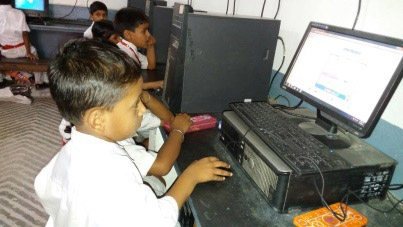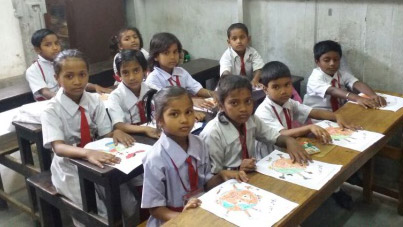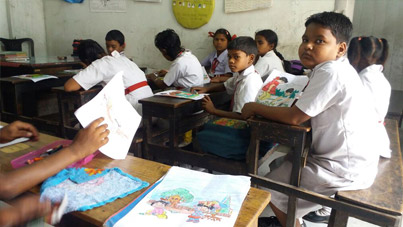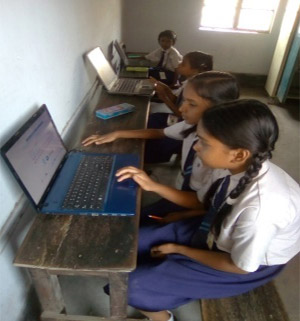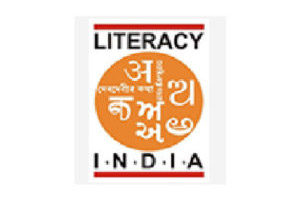
Corporate Donation - TCG Lifesciences Pvt. Ltd – INR 1,00, 000/-
GYANTANTRA DIGITAL DOST @ Government School in Kolkata in West Bengal: Empowering Children with Digital ICT based learning
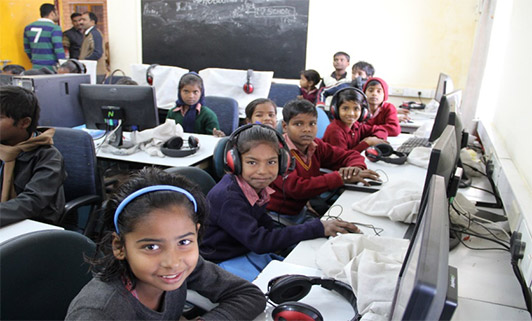
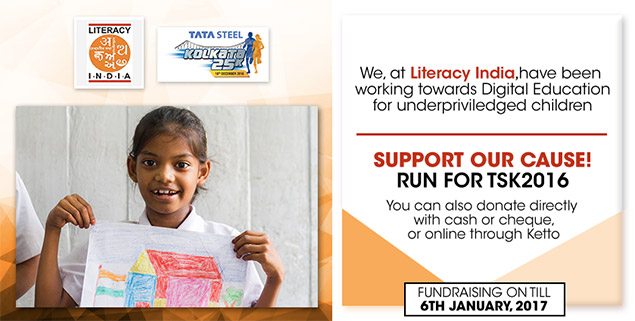
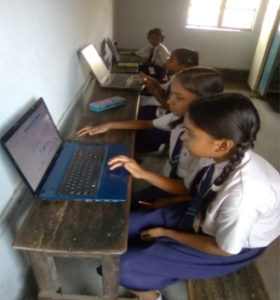
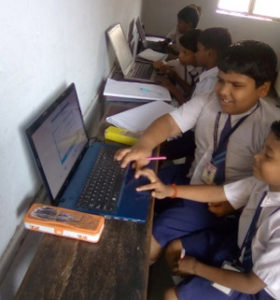
Back Ground of the Organization:
Literacy India has completed 20years with the objective of empowering underprivileged children and women by making them self-sufficient with special focus on the three E’s Education, Empowerment and Employment Keeping in view the rising problems of population and unemployment, Literacy India has not only taken on the task of creating awareness on the importance of education for under privileged children and youth, but also bringing them to level of reaching it.
- Identify young boys & girls from under privileged backgrounds and help build their confidence and awareness; Support children in active schooling
- Use role models to inspire the youth to take up issues concerning their communities
- Provide women and growing up children with vocational skills.
- Empower women economically from rural & slum areas.
- To nurture, mentor and assist children to become human resource
Literacy India’s endeavour is to meet this objective through imparting basic education and through exposing our students to a variety of vocational skills in performing arts, computer animation, multimedia etc. The organization believes in innovative pedagogy in order to retain the children within the purview of education. Literacy India is working across Delhi NCR, Haryana, West Bengal, Rajasthan, Uttarkhand, Himachal Pradesh, UP, Jharkhand, Karnataka and Andhra Pradesh. Today we have 55 centres in an around Delhi, NCR across other states in India and have reached out to more than 3,520000 beneficiaries.
At Present Literacy India catering to over 5000 children per day in classroomsdirectly and impacting 52,000 beneficiaries per annum across region.
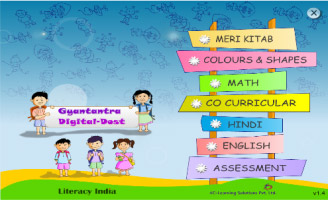
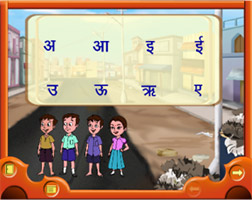
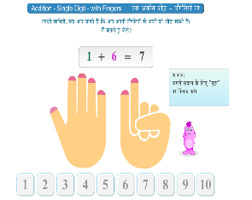
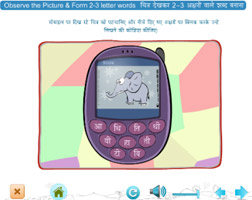
OverviewAll children have rights, as per the UN Convention on the Rights of the Child, 1989. These rights are the right to survival, development, protection and participation. Regardless of nationality or income levels, all children have the right to basic education, adequate food, shelter, protection, and healthcare. Experiences clearly demonstrate that investment in basic education is a prerequisite for economic development, and that continuing investment in quality education at all levels together with development of appropriate skills for the workforce is a prerequisite for continuing economic growth, particularly in an era of rapid and revolutionary advances in Information and Communications Technology (ICT). However in case of India, it is observed that lack of political will to implement the budget as well as investment in the sphere of economy. As a result, there is rapid poverty, illiteracy, lack of access toward resource.
It was in that context; Literacy India started the technology based basic education program which accelerated and took care of the lost time , so that the children are able to mainstream according to the level in the school as well as acquire the basic knowledge and skill of academic courses.
Project Description
Gyantantra Digital Dost (GDD), is an innovative PC based, interactive learning tool which is addressing the learning gap widely prevalent in the early grade schools across India in a cost effective and scalable manner.
The goal of the project is to build a scalable learning solution using technology which will complement classroom based learning for the children. In addition to core curriculum for Hindi, English, Maths and EVS, GDD also has very rich content on Life skills Education
Apart from that it is fast track & follows self- learning method; the children get to enter in the academic discourse through games and play without feeling of monotony & boredom.
Innovations which make GDD highly effective include:
- Self-learning (less dependency on a teacher)
- Self-paced (allow child to progress as per his/her aptitude)
- Holistic well-structured curriculum
- Multimedia and game-based (makes learning fun and interesting and ensures high attention and retention)
- Discusses pertinent/relevant life-issue.
- This unique virtual teacher is able to hasten the learning process and bring child’s learning level at an age appropriate level. GDD model is corroborated by the results of the first four years.
- GDD is able to yield greater impact per rupee than alternate ways of achieving the same development impacts.
Project Locations&beneficiaries
Govt. Schools at SastriShikshaSadan, Howrah &Rajbhavan School, Esplanade area.
Detail about Location and Beneficiaries:
| State | Location | School Name | Total Students Strengths | Total Targeted Reach Out |
|---|---|---|---|---|
| West Bengal | Kolkata | SastriShikshaSadan | 450 | 450 |
| Rajbhavan Free Primary School | 100 | 100 | ||
| Total | 550 |
Rationality to implement Gyantantra Digital Learning through Govt. Schools
There few basic reasons behind selection of Govt. Schools. Literacy India identifies those Govt. schools with specific characteristics features: Here follows those:
- The Govt. schools with huge students compare to less teachers ratio – may be guided by only 2 teachers with 150 students from class I- V level;
- The schools have enrolled students but students are not coming regularly or become drop-out
- The schools which are not getting enough students and retention level is too poor
- Remote areas Govt. schools which have both potentialities & students strength but cannot avail the opportunities of ICT based Digital learning due to lack of access
- The schools which are only Govt. school by name but lack infrastructure, class room set-up, quality teaching, irregular teachers attendance however school has visible roll strength
Here are few areas where Literacy India had selected Govt. School for implementing operation:
Kolkata- Literacy India is operating in both SastriShikshaSadan Govt. Primary School and Rajbhavan Free Primary Schools. SastriShikshaSadan Govt. Primary school is located in the areas where scavengers’ community is staying. It is locally called Bhagar- where children are doing rag picking and sorting out. The school falls in the category of huge enrolled students but absenteeism and drop out are prevalent. Rajbhavan Free Primary Govt. School is located at prime place in Kolkata- Dalhousie area. It caters basically street children as well as the children who are in difficult circumstance. Most of the children here are doing part-time child labour in local footpath tea stall; few of them are fishing out coins from Ganga River nearby during Immersion of Idol, Sradh Ceremony and so on. This school is falling into the category of school which cannot mobilise the students properly.
Goal of the project:
Ensuring an enabling environment through ICT based Digital Learning by using Gyantantra Software for Children of Govt. School at Primary Level so that the children will be able to learn Computer as well as Academic Course that would promote retention in school as well as curbing absenteeism and drop out rate.
Methods are using in the learning process:
- Multiple friendly mascots in human cartoon or animal form
- Interactive learning games
- Animated Short Stories, Puzzles and Songs woven into the learning content for motivation
- Animated Short Stories
- Template: Colourful, refreshing with large buttons but with very few buttons
Activities to be undertaken:
- Selection of Beneficiaries
- Level test has been conducted
- Class wise Break up and Making of Groups
- Class wise Worksheet Preparing
- Teachers Training
- Classes will be going on
- Report to Grantee
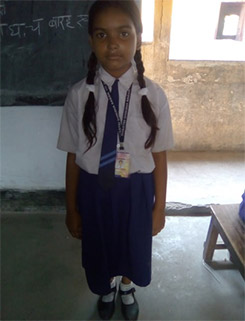
DMS ID : 11782
Muskan belongs to a poor family. She was born and raised in an area named Daspara near Belgachia. Howrah in West Bengal. Her father Imtiaz Ansari is a bus driver. She has two younger sisters and her mother MuniaParveen is a homemaker. She took admission in ShastriShikshaSadan since 4 years ago. Now she reads in class IV and we enroll her name with our G.D.D project in this year, 10th January 2017.She was very poor student when she joined the G.D.D class for the first time, even she couldn’t write her own name in English. After lots of hard work of our G.D.D facilitators now she became a brilliant student of ShastriShikshaSadan. She consistently increases her marks in every exam one after another. She got just 12 percent marks in the level test exam and now she got 65 percent marks in 5th monthly test exam .G.D.D helps her to bring back her interest in studies. She is very good in English and Math. Singing is one of her hobbies and she likes to play Hide & Seek. She says, “If I get the opportunity I want to be a Doctor in future” . Hope she will also score excellent marks in final G.D.D exam which we are going to conduct in the end of June, 2017 and also hope she will continue her study after completing her primary education.
Look at her progress report till now…
| Level Test | 1st Monthly Test | 2nd Monthly Test | 3rd Monthly Test | 4th Monthly Test |
|---|---|---|---|---|
| 12 | 73 | 71 | 67 | 65 |
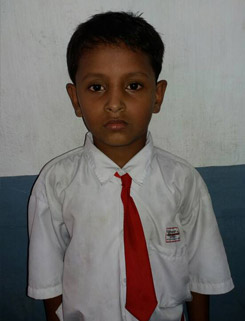
DMS ID : 12154
Prince, 7 years old boy lives near Eden gardens of Kolkata. His father Jay Prakash Yadav works in a private factory and mother Rita Devi is a housewife. He is one of our bright G.D.D beneficiaries of Rajbhavan Free Primary School Unit II. He reads in class II. He has two brothers and two sisters. We enroll Prince’s name as a G.D.D beneficiary in this year, 10th of January, 2017.He got 27 percent marks in the level test exam after that our G.D.D facilitator starts the G.D.D session and work hard for all the students. Prince is one of the results of that hard work that we Literacy India put in.Now prince is become a good student and he remains his consistency. Now he got 56 percent marks in the G.D.D 4th monthly test exam. He got more than this in 3rd and 2nd monthly test exam as well. Both English and Math are the favorite subjects of Prince. He wants to be a teacher in future. G.D.D programmebrings his interest back in studies we can say. Hope he will score highest marks in the final G.D.D exam.
Look at his progress report till now…
| Level Test | 1st Monthly Test | 2nd Monthly Test | 3rd Monthly Test | 4th Monthly Test |
|---|---|---|---|---|
| 27 | 62 | 65 | 73 | 56 |
- Through GDD Literacy India has been successful in attracting students towards education.
- The children are now able to operate the computers properly.
- GDD helped students to understand concepts and techniques in mathematics without struggle, by only a simple play way & interactive method.
- Average students have become sharp and intelligent in their classes.
- Students started taking part actively in activities carried out in class.
- The level of students is now on towards progression through GDD
Impact observed:
- Students can self-operate the computer and software now. They slowly become more technically sound.
- Increases the motivation of the students and build self confidence in them.
- Reduces the dropout rate amongst the students as they keep on learning new things.
- The program also gets the students ready to school
- Certain concept that are difficult for the children to grasp are made easy to learn through the GDD software
- Students on learn various life skills such as values, banking, hygiene etc which help them as they grow in life move forward positively.
- Overall retention of the children in academics and in school is maintained.
Expected output of project as follows:
The goal of the project is to build a scalable learning solution using technology which will complement classroom based learning for the children.
- 1. Increased performance among students weak in academics, dropout students and irregular, slow learner children to cope up with learning process up to his /her standard so that they could continue schooling.
- The children once admitted to school used to forget all those due to non – practice, due to change of place as parents migrate. In that case also, it helps the children to refresh the courses quickly. It is faster to grasp and regularity is maintained.
- It will curb the dropout rate and irregularity of children.
- Digital Literacy to ICT deprived Govt. School going children.
- ICT empowerment for children and Educators.
Key Indicators of Improvement -
- Academic level enhancement of children as per respective age and class ratio.
- Teachers training and refresher courses have enhanced the skill of the teachers that makes the teaching process more participatory.
- It helps lot of children in difficult circumstances especially the children who are irregular, slow learner or were out of school environment. Even The children in street become attentive, thoughtful and creative. They are able to use computers even in the non-structured environment. It gives a pleasure and joy to them as it is beyond class room structures.
- Beneficiaries are able to complete GYANTANTRA and mainstreaming is possible according to their level and are able to read and write
- Enrolment, Attendance and Dropout Ratio: - These indicators provide the reach of GDD. They are fairly easy to measure based on attendance data
- Learning Outcomes measures the effectiveness of the program. Regular appraisal of the students built into the curriculum provides this data
- Social Outcomes (School Enrolment, Higher Studies, etc.)
- With the development of new Application for mapping the impact - Literacy India will be able to enhance the data of impact.
Photo Album:
